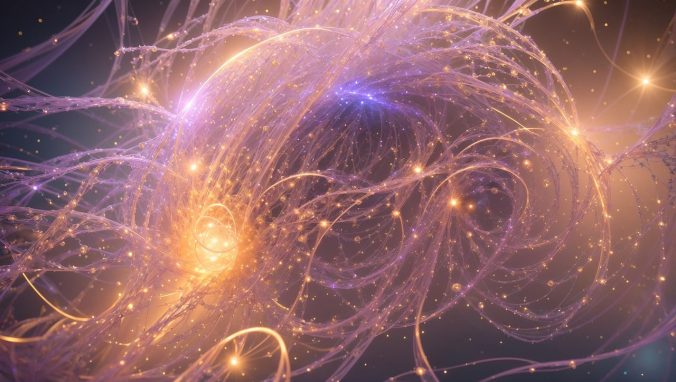Science and technology advance so rapidly that it is hard to keep up with them. This is true not only for the general public, but also for the scientists themselves and for scholars from fields like ethics and regulation, who find it increasingly difficult to predict what will come next. Today AI is among the most advanced scientific endeavors, raising both significant expectations and more or less exaggerated worries. This is mainly due to the fact that AI is a concept so emotionally, socially, and politically charged as to make a balanced evaluation very difficult. It is even more so when capacities and features that are considered almost uniquely human, or at least shared with a limited number of other animals, are attributed to AI. This is the case with consciousness.
Recently, there has been a lively debate about the possibility of developing conscious AI. What are the reasons for this great interest? I think it has to do with the mentioned rapid advances in science and technology, as well as new intersections between different disciplines. Specifically, I think that three factors play an important role: the significant advancement in understanding the cerebral bases of conscious perception, the impressive achievements of AI technologies, and the increasing interaction between neuroscience and AI. The latter factor, in particular, resulted in so-called brain-inspired AI, a form of AI that is explicitly modeled on our brains.
This growing interest in conscious AI cannot ignore certain risks of varying relevance, including theoretical, practical, and ethical relevance. Theoretically, there is not a shared, overarching theory or definition of consciousness. Discussions about what consciousness is, what the criteria for a good scientific theory should be, and how to compare the various proposed theories of consciousness are still open and difficult to resolve.
Practically, the challenge is how to identify conscious systems. In other words, what are the indicators that reliably indicate whether a system, either biological or artificial, is conscious?
Finally, at the ethical level several issues arise. Here the discussion is very lively, with some calling for an international moratorium on all attempts to build artificial consciousness. This extreme position is motivated by the need for avoiding any form of suffering, including possibly undetectable artificial forms of suffering. Others question the very reason for working towards conscious AI: why should we open another, likely riskier box, when society cannot really handle the impact of AI, as illustrated by Large Language Models? For instance, chatbots like ChatGPT show an impressive capacity to interact with humans through natural language, which creates a strong feeling that these AI systems have features like consciousness, intentionality, and agency, among others. This attribution of human qualities to AI eventually impacts the way we think about it, including how much weight and value we give to the answers that these chatbots provide.
The two arguments above illustrate possible ethical concerns that can be raised against the development of conscious artificial systems. Yet are the concerns justified? In a recent chapter, I propose a change in the underlying approach to the issue of artificial consciousness. This is to avoid the risk of vague and not sufficiently multidimensional analyses. My point is that consciousness is not a unified, abstract entity, but rather like a prism, which includes different dimensions that could possibly have different levels. Based on a multidimensional view of consciousness, in a previous paper I contributed a list of indicators that are relevant also for identifying consciousness in artificial systems. In principle, it is possible that AI can manifest some dimensions of consciousness (for instance, those related to sophisticated cognitive tasks) while lacking others (for instance, those related to emotional or social tasks). In this way, the indicators provide not only a practical tool for identifying conscious systems, but also an ethical tool to make the discussion on possible conscious AI more balanced and realistic. The question whether some AI is conscious or not cannot be considered a yes/no question: there are several nuances that make the answer more complex.
Indeed, the indicators mentioned above are affected by a number of limitations, including the fact that they are developed for humans and animals, not specifically for AI. For this reason, research is still ongoing on how to adapt these indicators or possibly develop new indicators specific for AI. If you want to read more, you can find my chapter here: The ethical implications of indicators of consciousness in artificial systems.

Written by…
Michele Farisco, Postdoc Researcher at Centre for Research Ethics & Bioethics, working in the EU Flagship Human Brain Project.
Michele Farisco. The ethical implications of indicators of consciousness in artificial systems. Developments in Neuroethics and Bioethics. Available online 1 March 2024. https://doi.org/10.1016/bs.dnb.2024.02.009
We want solid foundations



It’s becoming clear that with all the brain and consciousness theories out there, the proof will be in the pudding. By this I mean, can any particular theory be used to create a human adult level conscious machine. My bet is on the late Gerald Edelman’s Extended Theory of Neuronal Group Selection. The lead group in robotics based on this theory is the Neurorobotics Lab at UC at Irvine. Dr. Edelman distinguished between primary consciousness, which came first in evolution, and that humans share with other conscious animals, and higher order consciousness, which came to only humans with the acquisition of language. A machine with only primary consciousness will probably have to come first.
What I find special about the TNGS is the Darwin series of automata created at the Neurosciences Institute by Dr. Edelman and his colleagues in the 1990’s and 2000’s. These machines perform in the real world, not in a restricted simulated world, and display convincing physical behavior indicative of higher psychological functions necessary for consciousness, such as perceptual categorization, memory, and learning. They are based on realistic models of the parts of the biological brain that the theory claims subserve these functions. The extended TNGS allows for the emergence of consciousness based only on further evolutionary development of the brain areas responsible for these functions, in a parsimonious way. No other research I’ve encountered is anywhere near as convincing.
I post because on almost every video and article about the brain and consciousness that I encounter, the attitude seems to be that we still know next to nothing about how the brain and consciousness work; that there’s lots of data but no unifying theory. I believe the extended TNGS is that theory. My motivation is to keep that theory in front of the public. And obviously, I consider it the route to a truly conscious machine, primary and higher-order.
My advice to people who want to create a conscious machine is to seriously ground themselves in the extended TNGS and the Darwin automata first, and proceed from there, by applying to Jeff Krichmar’s lab at UC Irvine, possibly. Dr. Edelman’s roadmap to a conscious machine is at https://arxiv.org/abs/2105.10461